Fit for the Season! - Build your Own Training Program
In order to push yourself -or your cycling buddies- in 2017 during the spring classics or tours, you need to have a goal to work towards. Let's say you’re entering a race or sportive in April. If you create a plan of attack right now, it’ll be easier to keep training throughout the winter. This way, you give yourself the biggest possible head start on your clubmates or cycling partners. Niels, one of our resident racers, explains how you can best prepare yourself for the coming season by making a training schedule for yourself.
While others might cower away in front of a hot stove, watch tv on their sofa, or have a number of seemingly perfect excuses not to ride, you get your bike out. Either for outside training, or to spend your hours riding on an indoor trainer.
Training Now pays Dividends throughout the Year!
If you can get yourself to stick to a training schedule now, then you’ll reap the benefits for the rest of the year! After all: how strong your foundation is determines how high you can build upon it. Besides, keeping busy in the winter means you’ll have to haul around less excess weight in the spring.
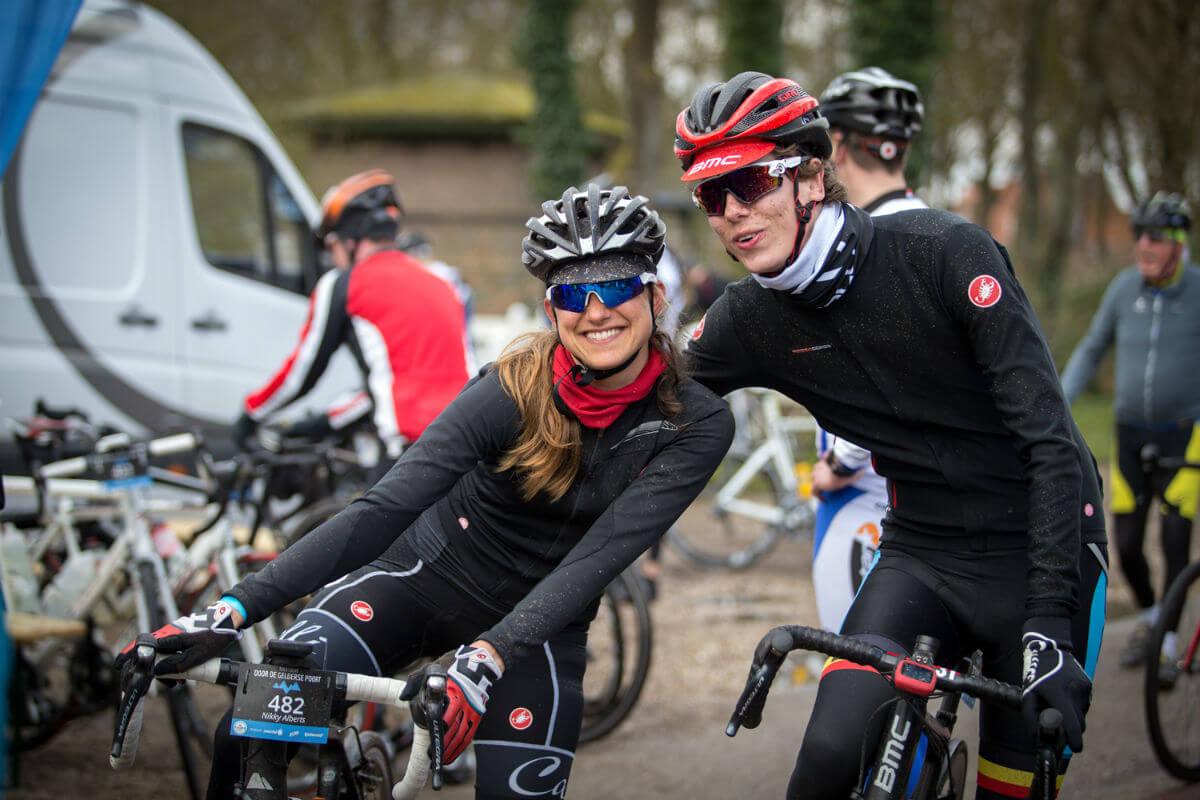
Start training now, and you’ll have lost all those Christmas dinners by the time the season starts. This means you won’t be weighed down by any extra kilos up the first hills of the year.
Not only will you feel fit at the start, you’ll also be more motivated to perform well because you know what you’ve been training for all winter long.
Get Yourself Ready
In order to optimally prepare, you’re going to need at least a heart rate monitor and cadence sensor. A bike too, but that goes without saying. You need these items in order to monitor your progress and keep yourself in the right training zone during your workout.
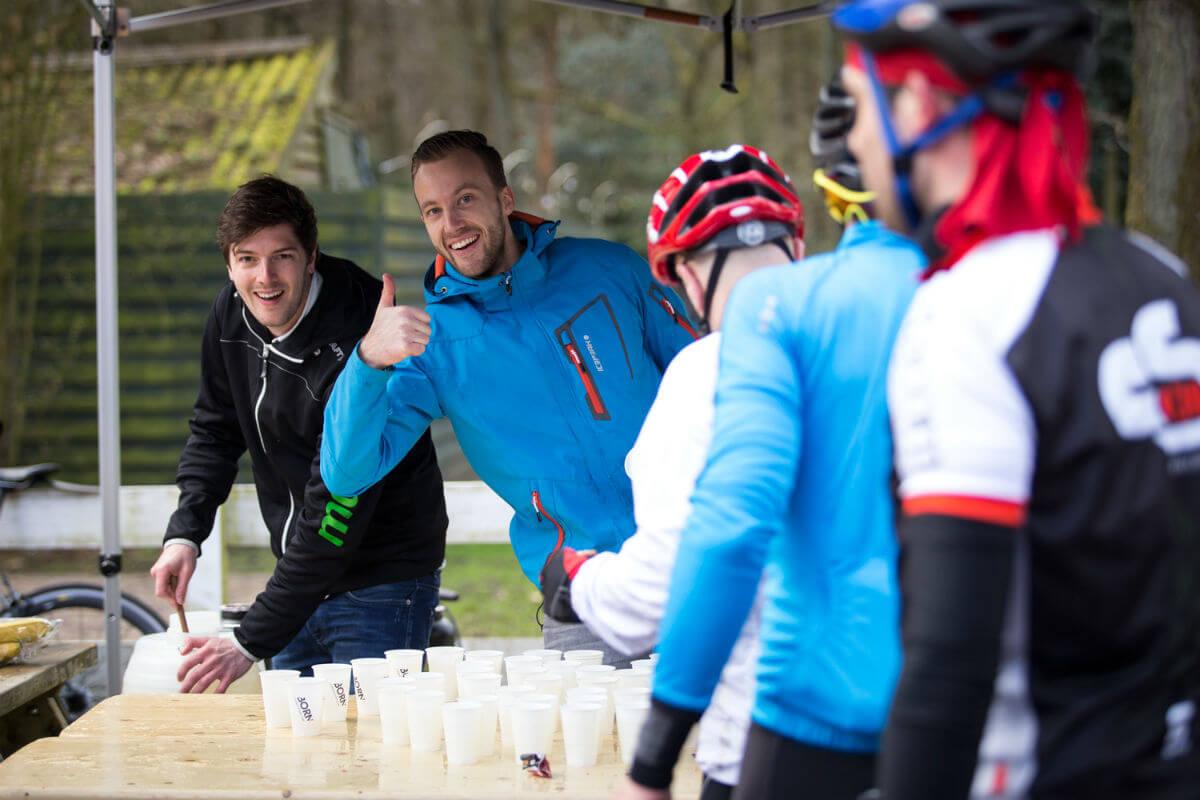
The more data you can gather on yourself, the better you’ll be able to tailor your training accordingly.
What do the Different Heart Rate Zones mean?
In order to properly structure your training sessions, you first need to know a little more about the different heart rate zones. There are 5: recovery, D1, D2, D3, and max. power.

Max. power training isn’t relevant to a sportive, so we leave that be for now.
How do I Calculate my Threshold Value?
You can fairly easily guestimate your own threshold value. First, you need to determine your maximum heart rate. Again, there’s a fairly crude rule of thumb if you don’t know your max heart rate and haven’t had this determined by a doctor.
In order to approximate your maximum heart rate, simply subtract your age from 220. If you’re 24, your max heart rate would be: 220 - 24 = 196. In order to determine your threshold value, subtract another 20 from that number. In this case: 196 - 20 = 176.
Training = Learning how to Pace Yourself
You need between 6 and 8 weeks to fully learn how to steadily remain in a zone. Remaining in a specific zone means being in control of your heart rate within this zone and not have it fluctuate wildly while you’re riding.
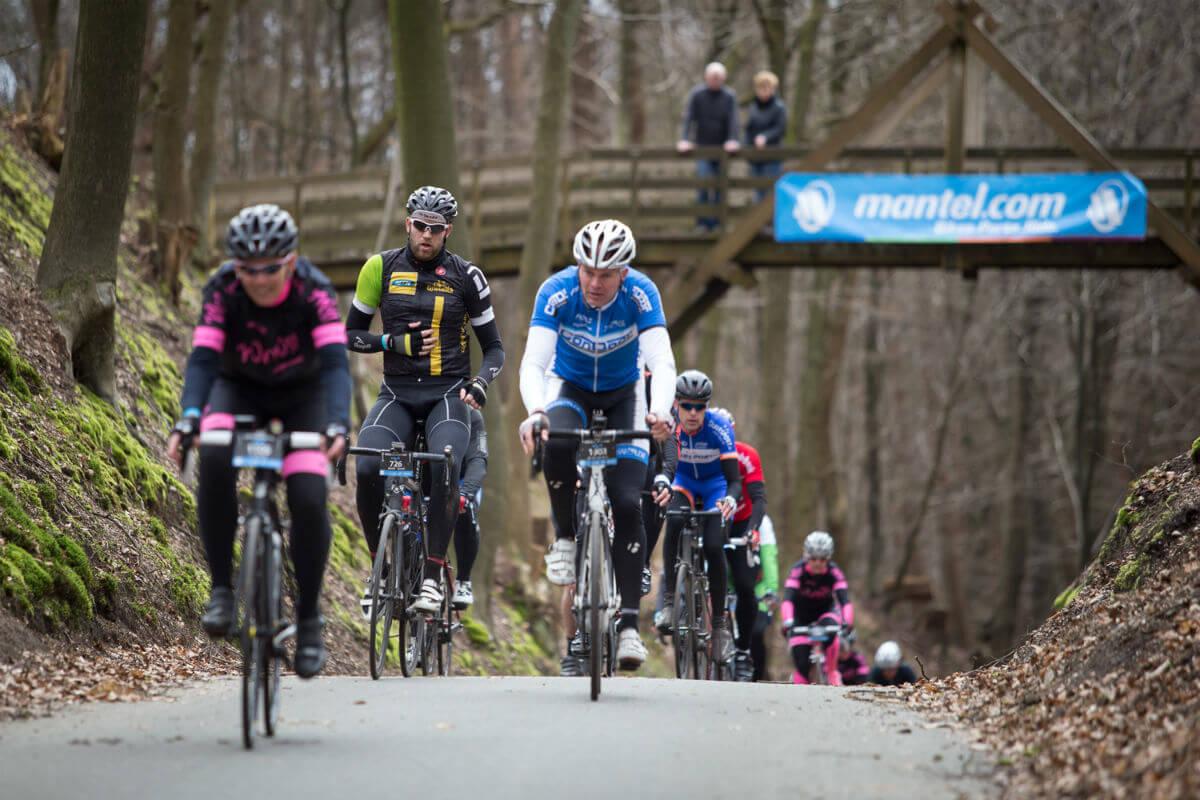
Basically, this means you don’t end up in zone D3 when you increase the pace a little, ride up a climb, or push the group a bit. Proper training teaches your body to use fat reserves for energy rather than focussing on carbohydrates. This eventually allows you to go faster for longer!
It also means you’ll save energy for when you really need it most. The graph below helps you determine your personal heart rate zones. Note that this graph uses the 196 max heart rate as an example! (Please note: this is just an indicator. If you want to know more about your precise heart rate zones, then have a VO2 max test done by a qualified doctor).

A general rule of thumb for determining your max heart rate: 220 (men) or 224 (women) minus your age.
16-week Schedule
April is about 16 weeks away. Because of this relatively short window, some of the D1, D2, and D3 training sessions will have a certain level of overlap. For an optimal result, you’ll have to do at least 3 training sessions per week.
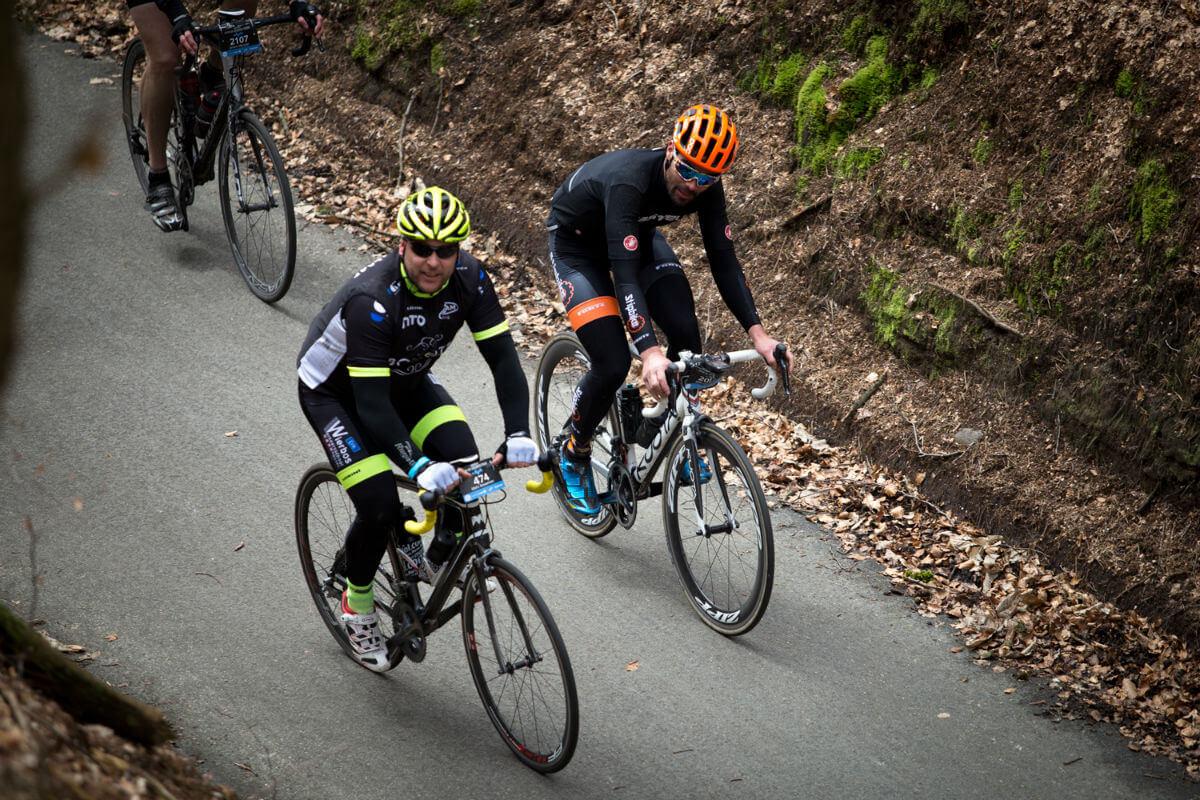
These training sessions will start at D2 intensity and will later also be featuring D3 ones. There’s always a recovery training or rest day between two more intense training sessions. This gives your body enough time to recover from previous workouts.
Increase the number of blocks every week, as well as the duration of your sessions. Weekdays are filled with short, intense training sessions, while the weekend is great for long and steady workouts.
Train and Rest
The plan is to work hard for 3 weeks, and then have a 4th rest week. This rest week doesn't mean doing nothing, but rather going through the same schedule at a lower intensity.
As we’ve got 16 weeks, we get to go through 4 complete cycles.
Planning your Workouts
So what do these weeks look like? The “ideal” 3-training planning would be Tuesday, Thursday, and Saturday. If you have some extra time, you could always go for a recovery ride on a rest day. Or do a D1 training session if you’re feeling fit and rested.
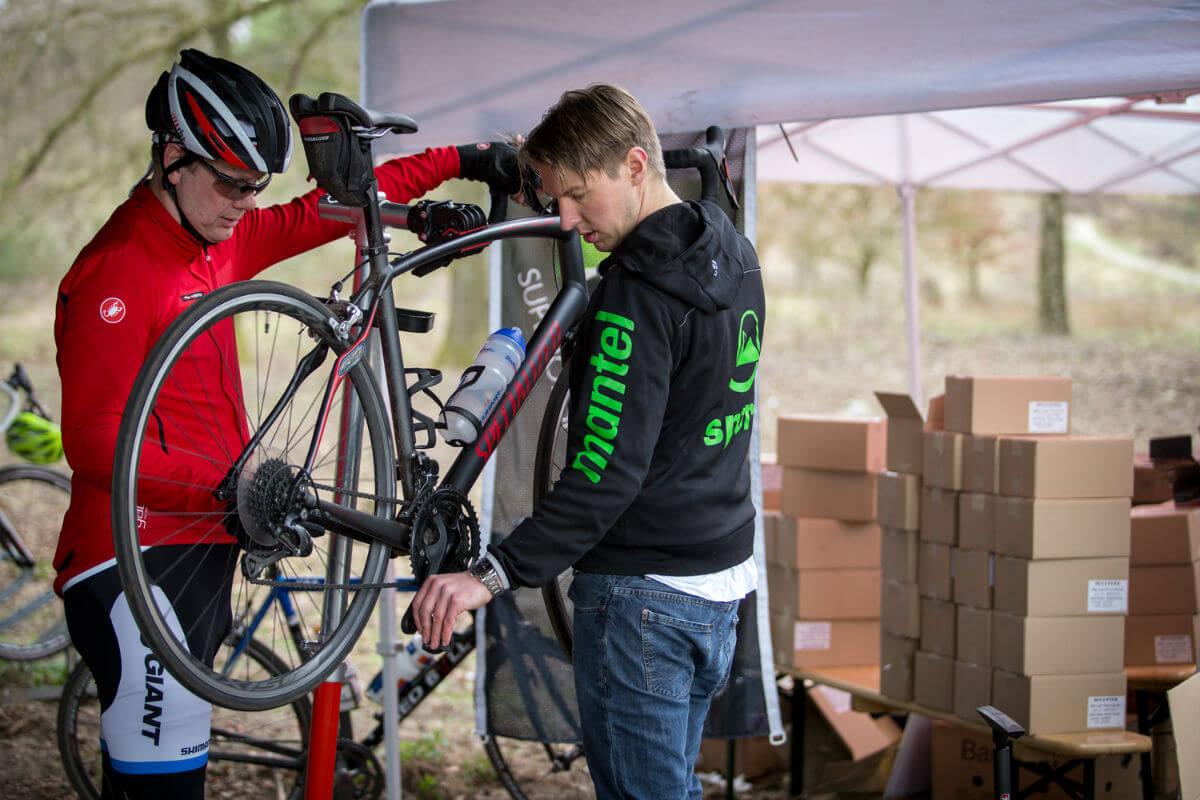
One way of determining whether your body has sufficiently recovered is measuring your resting heart rate in the morning. Is this elevated by 10 to 15 beats over your regular average morning rate? Then your body requires more rest as you’ve not completely recovered. Before you start your training program, check your morning heart rate a few times to get a baseline.
Since we don’t have access to everyone’s personal planning, I’d like to offer you 3 basic training sessions you could use when building your own plan:
High-Intensity Training
No more than 2 times a week should you run a high intensity block-session. This training entails riding high-intensity 10-minute blocks with 5 minutes of recovery time in between. Every week you progress through your schedule, you add a block to your workout.
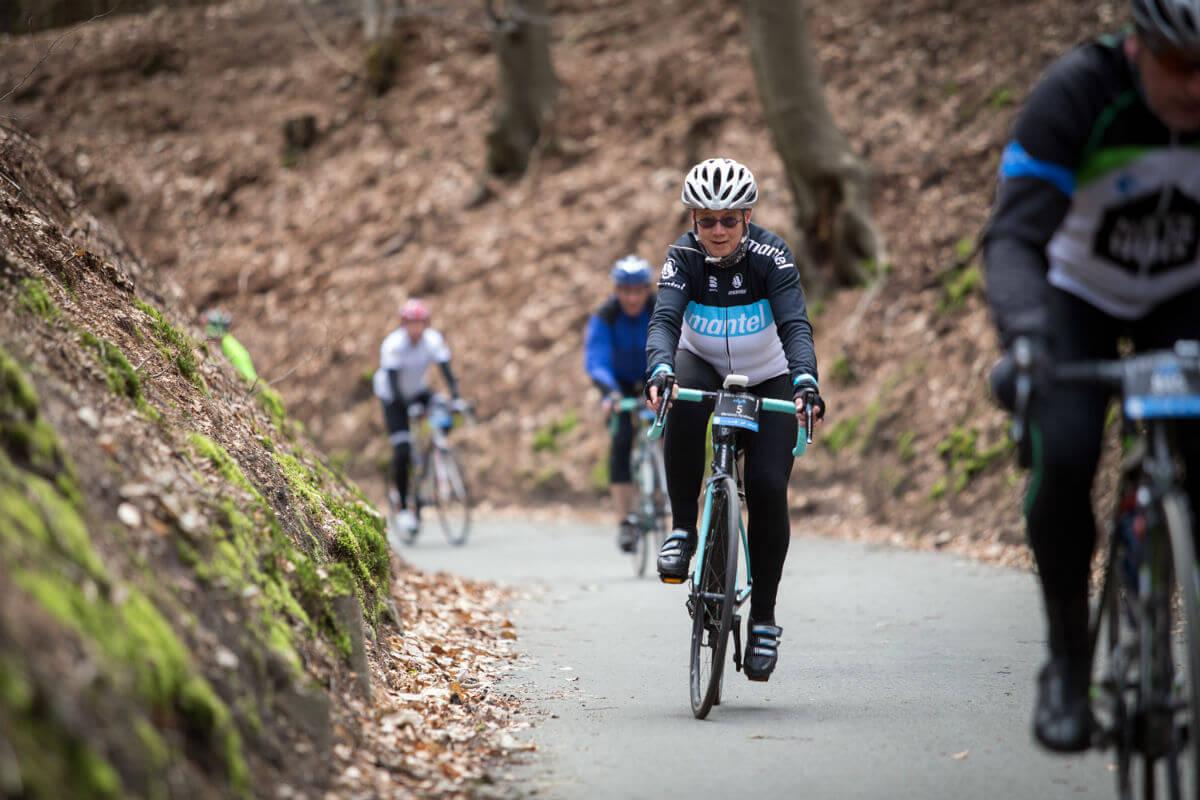
Make sure to warm up for the first 20 minutes in D1 before you start your block-sets. Your cadence should be at least 85 revolutions per minute.
Steady Endurance
Once or twice a week, you go out for a steady endurance training. This entails riding for 2 to 3 hours in zone D1. Make sure your cadence is between 90 and 100 rpm.
Recovery Training!
Maybe the most important sessions in your schedule; recovery training! Go out for a recovery ride once or twice a week and ride in your recovery-zone for 1 to 2 hours. Your cadence should be between 90 and 100 rpm.
Create your Own Training Schedule
It’s easy to use fixed training days when you’re making your own schedule. Write your sessions down on a calendar: not only does this make it clearer what your entire plan looks like, it also stimulates you to stick to the plan.
Recovery rides and steady workouts are just as important as the high-intensity sessions, so take care to plan these as well!
Take the recovery week seriously, and stick to your low intensity workouts. Don’t be tempted to take on riders who pass you by during that week! Let them be for now...
Increasing your Effort
The first 3 weeks of your 16 week program consists of a steady rise in intensity, starting low in D2 to higher in D2/low in D3 to higher in D3. Take care not to overshoot into the Max. Power zone!
There are 2 ways of increasing your intensity. Either increase the number of blocks, creating a longer workout, or increase the intensity within each block. This raises your heart rate within each block quicker.
The last 6 weeks should focus on D3 block training. These are increased weekly when it comes to intensity and repetitions.
Also try to limit the number of group rides. Solo training is more effective when it comes to your personal progress, as this allows you to focus more on your own heart rate and workout without having to worry about others.

Try to plan your longer workouts for the weekend, or when you’ve got plenty of time during the week. The shorter, more intense workouts can be done at home in the evening using a trainer.
It’s important to consistently monitor your morning heart rate. This way, you can keep tabs on your fatigue levels. Listen to what your body tells you in order to prevent overreaching!
Recap: Your Training Program
In short: 3 rides a week, at least. One intense sessions, one extended session, and one recovery training, using the days in between the training sessions to rest. Steadily increase the intensity of the high-intensity block training over a period of 16 weeks.
Best of luck, and who knows: maybe we’ll see you at the start of one of this season’s events!
Niels Berenschot
I'm an enthousiastic rider with 10 years of racing experience. I quit 2 years ago, but have since started riding with the amateurs again. I do so on a Ridley Helium fitted with Reynolds 66 wheels, or a set of Fast Forward F2r's. As you may have figured out, I love great equipment. I enjoy riding with my friends and colleagues, both here and abroad. I spend my winter on a Trek Superfly 9.6 and blasting around the Indoor Track at Apeldoorn.
Related posts

Gift ideas for Christmas: a perfect present for every cyclist!
8 December 2023Gift ideas for Christmas: a perfect present for every cyclist!The Christmas holidays are just around the corner! If you ...
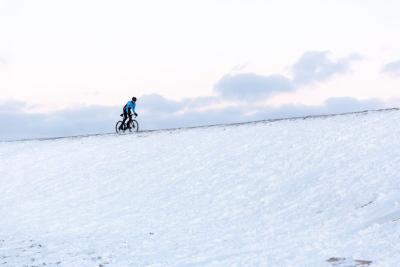
What winter cycling gear do I need for which temperature? [Buyer's Guide]
18 October 2023The leaves on the trees are slowly turning shades of red and yellow ...
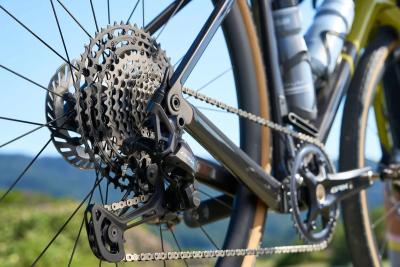
Shimano Launches New Mechanical 12-speed Gravel GRX 820 and 105 R7100 Road Bike Groupsets
31 August 2023The cycling world is constantly innovating to improve performance and the cycling experience ...
 Nederland
Nederland België
België Deutschland
Deutschland United Kingdom
United Kingdom Finland
Finland Ireland
Ireland Luxembourg
Luxembourg Portugal
Portugal Poland
Poland Österreich
Österreich France
France España
España Italia
Italia Sverige
Sverige Danmark
Danmark










































































































































































































































